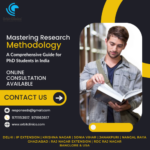‘A Comprehensive Analysis of Ovulation, Its Impact on Women’s Health, and the Influences of Lifestyle Factors and Homeopathy’

Written by
Dr. Deepak Sharma
BHMS, MD, Ph.D. (Scholar)
Homeopathic Physician and Educator
Founder – Orbit Clinics (World Class Homeopathic Clinics Worldwide)
Abstract:
Ovulation, the intricate process integral to the creation of life, is a rhythmic ballet conducted by the female body. This paper dives into the intricacies of ovulation, beginning with the maturation and release of an egg during the menstrual cycle, under the influence of an orchestration of hormones. The implications of ovulation extend far beyond reproduction, influencing a woman’s physical, emotional, and overall wellbeing. The process is influenced by a multitude of factors, including dietary, environmental, and psychological elements. The exploration continues to the sphere of ovulation disorders and how homeopathy, with its holistic approach, could support overall hormonal balance and wellbeing. The paper concludes with the role of diet and exercise in ovulation and overall reproductive health. Thus, it paints a comprehensive picture of the scientific, holistic, and magical phenomenon of ovulation, shedding light on its potential to sustain life and influence health beyond reproduction.
Introduction:
In the myriad wonders that Mother Nature unfolds, one of the most fascinating phenomena is ovulation, a delicate, clockwork-like process that plays a key role in the genesis of life. The ovary, a petite yet powerful organ, is the locus of this intricate marvel. Yet, its functioning often goes unnoticed, hidden away in the folds of routine biology textbooks, or in the white noise of healthcare advice.
Weaving together an intricate tapestry of hormones, biological cues, and cellular transformations, ovulation exemplifies the elegant complexity of life. It is a phenomenon that manages to be both routine and remarkable, both scientific and, in a sense, magical.
The Ovarian Waltz: Ovulation and Its Choreography
Every month, the female body performs an intricate dance that ends with the release of an egg from one of the ovaries, marking the grand finale of ovulation. This event is synchronized with the menstrual cycle and is influenced by a well-orchestrated interplay of hormones and physiological processes.
At birth, a female has all her potential eggs, or oocytes, neatly tucked within her ovaries. These oocytes remain in a state of suspended animation until puberty, when hormonal surges awaken them. Each menstrual cycle, under the influence of follicle-stimulating hormone (FSH), several oocytes begin to mature, but typically only one reaches full maturity and is released during ovulation.
The egg’s release is prompted by a surge in luteinizing hormone (LH), often termed as the ‘LH surge’. This mature egg then journeys through the fallopian tube, ready for fertilization. If fertilization does not occur, the unfertilized egg along with the uterine lining is shed, marking the onset of menstruation.
The Mystical Symphony of Hormones:
The real magic in this process lies in the precision of the hormone signaling and feedback loops. The hypothalamus secretes gonadotropin-releasing hormone (GnRH), stimulating the pituitary gland to release FSH and LH. FSH nudges follicles in the ovaries to mature, each one enclosing an egg.
As the follicles mature, they secrete estrogen, signaling the body’s readiness for ovulation. The LH surge, in response to rising estrogen levels, prompts the release of the mature egg. Post ovulation, the remnant of the follicle morphs into the corpus luteum, which secretes progesterone, preparing the uterine lining for a possible pregnancy. The delicate balance and timing of these hormones is a testament to the meticulous orchestration of the female body.
Ovulation: The Crucible of Life
The magic of ovulation extends beyond its role in reproduction. It underscores the rhythms of life, influencing a woman’s physical and emotional wellbeing. Changes in hormone levels during the menstrual cycle can affect mood, energy levels, and even cognition. Understanding ovulation and its influence on the body is crucial to understanding women’s health in a broader sense.
Moreover, the precision and rhythmicity of ovulation are extraordinary. Consider the fact that the egg, once released, is viable for only about 24 hours. The synchrony between ovulation and the potential fertilization is meticulously timed. A delay in either end could disrupt the potential for conception.
A Marvel Beyond Reproduction:
The ovary, through the process of ovulation, is far more than a conduit for reproduction. It is an integral part of the physiological symphony that maintains the health and wellbeing of half the population.
The magic of ovulation lies not only in its role as the creator of life butalso in its intricate orchestration of bodily rhythms. Like a maestro commanding a symphony, the ovary conducts a monthly cycle of hormonal and physical changes, leading up to the release of the egg, an act that brings the potential of a new life into existence.
Yet, this process does not occur in a vacuum. It’s closely linked to a multitude of factors – dietary, environmental, psychological, and beyond. Stress, for instance, can disrupt the delicate balance of hormones, leading to irregular or missed ovulation. Lifestyle factors such as diet and exercise have also been found to influence ovulation and overall reproductive health.
Beyond the Science: The Magic of Ovulation
Science provides a roadmap to understanding the process of ovulation, but the magic of it extends beyond our scientific comprehension. The process of ovulation is inherently miraculous, not just for the complex biological orchestration it involves, but also for its profound implication: the creation of life.
Each ovulation brings with it the promise of new life, a wonder that has perpetuated the human race for millennia. Every new life, every person, every story that has ever existed is owed, in part, to this cyclic process occurring within the quiet confines of the ovary.
The magic lies in the resilience of the process, its steadfast adherence to the rhythmic pattern, and its ability to dance to the music of the hormones month after month. It lies in the unwavering patience of the eggs, lying dormant for years, waiting for their turn to participate in the symphony of life.
Ovulation and Womanhood: A Harmonious Blend
The relationship between ovulation and womanhood is as deep as it is complex. The process of ovulation is not merely a biological event but is also intricately intertwined with the experiences of being a woman. Menstruation, fertility, menopause – these distinctive stages of a woman’s life are all governed by the underlying rhythm of ovulation.
Understanding the process of ovulation, therefore, is not just important for reproductive health, but also for understanding the many nuances of womanhood. The fluctuating hormone levels that dictate the menstrual cycle can influence mood, libido, energy levels, and even cognition. In essence, the process of ovulation plays a key role in shaping the experiences of being a woman.
Ovulation and Fertility: The Confluence of Possibilities
Ovulation is the cornerstone of female fertility. It is the moment when the possibility of conception is at its highest. The journey of the egg from the ovary to the uterus is a voyage filled with potential – the potential to start a new life.
For couples seeking to conceive, understanding the timing of ovulation is crucial. Techniques such as tracking menstrual cycles, observing physiological changes, or using ovulation prediction kits can help identify the ‘fertility window’ – the days in the cycle when the chances of conception are highest.
However, it’s not just about conception. Understanding ovulation also helps in birth control planning. By avoiding intercourse during the fertility window, couples can prevent unwanted pregnancies without resorting to hormonal contraception or devices.
Ovulation Disorders: Breaking the Rhythm
The intricate symphony of ovulation can sometimes falter, leading to ovulatory disorders. Polycystic ovary syndrome (PCOS), hypothalamic dysfunction, premature ovarian failure – these conditions disrupt the delicate balance of hormones required for ovulation, leading to irregular menstrual cycles and infertility.
Such disorders underscore the importance of maintaining a healthy lifestyle and getting regular check-ups. Early detection can lead to effective management and treatment of these conditions, preventing long-term health complications.
The Future of Ovulation Research: Beyond the Horizon
While our understanding of ovulation is comprehensive, there is always more to explore. Advances in medical technology and research continue to shed light on the subtleties of this magical process. For example, research is being conducted into how environmental factors, such as exposure to certain chemicals, can impact ovulation and overall reproductive health.
Furthermore, advancements in reproductive medicine are expanding the possibilities of what we can achieve. From fertility treatments for women struggling to ovulate, to egg freezing for women who wish to delay childbearing, our growing understanding of ovulation is creating a world of possibilities for women’s reproductive choices.
The Homeopathic Perspective: The Role of Nature’s Remedies
The beauty of homeopathy lies in its holistic approach to health and wellness. It takes into account the interplay of physical, emotional, and environmental factors to provide a balanced and tailored treatment strategy. Homeopathic remedies work in harmony with the body’s natural processes, supporting and stimulating the body’s ability to heal and regulate itself.
In the context of ovulation, homeopathy can be a valuable tool. While it’s important to state that homeopathic remedies cannot directly induce ovulation, they can assist in maintaining overall hormonal balance, improving general wellbeing, and addressing specific health issues that might affect ovulation and fertility.
Homeopathic Remedies and Ovulation
A homeopathic practitioner, taking a comprehensive history, may recommend remedies based on individual characteristics and symptoms. Here are a few homeopathic remedies often considered in cases related to ovulation and reproductive health:
- Pulsatilla: Traditionally used for women with irregular or absent periods, Pulsatilla is often recommended for individuals with a mild, sensitive disposition. This remedy is also used when menstrual periods are painful.
- Sepia: It is often used in women who feel exhausted and worn down. Sepia may also be beneficial for women experiencing mood swings, irritability, or depression, particularly when these symptoms worsen before menstruation.
- Folliculinum: This is a unique homeopathic remedy made from estrone, a naturally occurring estrogen. It is typically used in hormonal imbalances and could be beneficial for women with menstrual irregularities.
- Graphites: This remedy is often recommended for women who have late or scanty periods, or who suffer from polycystic ovary syndrome (PCOS).
- Natrum Muriaticum: It is commonly used for women who have irregular cycles or who are experiencing emotional stress.
Remember, homeopathic medicine follows the principle of individualized treatment, and the remedies should be chosen based on the complete symptom picture of the individual.
In the Sphere of Fertility: Homeopathy’s Role
As an adjunct to conventional fertility treatments, homeopathy can help in managing stress, supporting overall wellness, and addressing underlying health issues that may interfere with fertility.
Given the highly personalized nature of homeopathy, there’s no one-size-fits-all solution. Instead, homeopaths aim to tailor treatments to the individual’s unique constellation of symptoms, ensuring a truly holistic approach to care.
While more research is needed to establish the role of homeopathy in ovulation and fertility, anecdotal evidence and preliminary studies suggest it might provide supportive care. However, it’s important to consult with a healthcare professional or a qualified homeopathic practitioner when dealing with reproductive health concerns.
A Note on Holistic Health
Understanding the magic of ovulation goes hand in hand with appreciating the delicate balance of our bodies. Homeopathy offers a complementary approach, promoting the body’s innate healing potential and helping maintain hormonal balance.
Ovulation from the ovary is indeed a magical phenomenon. With the interplay of science and the holistic approach of treatments like homeopathy, we can better understand, support, and marvel at the intricate processes that sustain life, showcasing the beauty of biological rhythms and the miracle of human existence.
Influence of Diet and Exercise on Ovulation:
The process of ovulation is not just determined by internal factors such as hormones and genetics, but also by external influences, including our lifestyle choices. Particularly, diet and exercise play an instrumental role in shaping a woman’s reproductive health.
Diet’s Role in Ovulation:
Nutrition significantly influences reproductive health, including ovulation. The food we consume provides the building blocks for our body’s functions. A well-balanced diet fuels the body, ensuring the optimum function of various systems, including the reproductive system.
Studies have found links between certain dietary factors and ovulation disorders. For instance, consuming a diet high in refined carbohydrates and sugars can lead to insulin resistance, which, in turn, can disrupt ovulation. On the other hand, a diet rich in fruits, vegetables, lean proteins, and whole grains supports overall health and helps maintain hormonal balance.
Certain nutrients, such as omega-3 fatty acids, are believed to promote reproductive health. Foods like fatty fish, flaxseeds, and walnuts are rich in these nutrients. Similarly, consuming sufficient amounts of vitamins and minerals, such as Vitamin D, folic acid, and iron, is crucial for maintaining healthy ovulation.
However, it is essential to remember that nutrition needs are highly individualized. What works for one woman may not necessarily work for another. Consultation with a healthcare professional or nutritionist can provide personalized dietary advice tailored to individual needs and health goals.
Exercise and Ovulation:
Exercise plays a significant role in maintaining overall health and wellbeing. It aids in weight management, reduces stress, improves mood, and enhances the body’s resilience against diseases. It also plays a crucial role in regulating the menstrual cycle and promoting healthy ovulation.
Research suggests that moderate physical activity can aid in regulating menstrual cycles and improving fertility. Regular exercise helps maintain a healthy body weight, which is crucial for fertility, as both underweight and overweight can lead to ovulatory disorders.
However, it is also essential to strike a balance. Excessive physical activity or strenuous exercise can disrupt the menstrual cycle and ovulation, especially if it leads to significant weight loss. Therefore, the key lies in maintaining a balanced approach to exercise – one that keeps you fit and healthy without pushing your body to extremes.
References:
- Speroff L., Fritz M.A. (2019). Clinical Gynecologic Endocrinology and Infertility. Philadelphia, PA: Lippincott Williams & Wilkins.
- Johnson M.H. (2016). Essential Reproduction. New Jersey, NJ: John Wiley & Sons.
- Hillard P.J. (2018). Practical Pediatric and Adolescent Gynecology. Oxford, UK: Wiley Blackwell.
- Chavarro, J. E., Rich-Edwards, J. W., Rosner, B. A., & Willett, W. C. (2007). Diet and lifestyle in the prevention of ovulatory disorder infertility. Obstetrics & Gynecology, 110(5), 1050-1058.
- Gaskins, A. J., & Chavarro, J. E. (2018). Diet and fertility: a review. American journal of obstetrics and gynecology, 218(4), 379-389.
- Wise, L. A., Rothman, K. J., Mikkelsen, E. M., Sørensen, H. T., Riis, A., & Hatch, E. E. (2010). An internet-based prospective study of body size and time-to-pregnancy. Human reproduction, 25(1), 253-264.
- Wise, L. A., Cramer, D. W., Hornstein, M. D., Ashby, R. K., & Missmer, S. A. (2012). Physical activity and semen quality among men attending an infertility clinic. Fertility and sterility, 97(3), 612-619.
- Vitti, A. (2013). WomanCode: Perfect Your Cycle, Amplify Your Fertility, Supercharge Your Sex Drive, and Become a Power Source. New York, NY: HarperOne.
- Shreeve, N., Caglia, J. M., Matthewman, G., & Baker, P. N. (2015). Homeopathy for induction of labour. The Cochrane database of systematic reviews, (9), CD003399.
- Ullman, D. (2007). The Homeopathic Revolution: Why Famous People and Cultural Heroes Choose Homeopathy. Berkeley, CA: North Atlantic Books.
- Yildiz, B. O., Knochenhauer, E. S., & Azziz, R. (2008). Impact of obesity on the risk for polycystic ovary syndrome. The Journal of Clinical Endocrinology & Metabolism, 93(1), 162-168.
- Gurevich, R. (2018). The Impatient Woman’s Guide to Getting Pregnant. New York, NY: Simon & Schuster.
- Norman, R. J., Dewailly, D., Legro, R. S., & Hickey, T. E. (2007). Polycystic ovary syndrome. The Lancet, 370(9588), 685-697.
- De Leo, V., Musacchio, M. C., Cappelli, V., Massaro, M. G., Morgante, G., & Petraglia, F. (2016). Genetic, hormonal and metabolic aspects of PCOS: an update. Reproductive biology and endocrinology, 14(1), 38.
- Jones, G. E. (1997). Homeopathy and mental health care: Integrative practice, principles, and research. London, UK: Jessica Kingsley Publishers.




